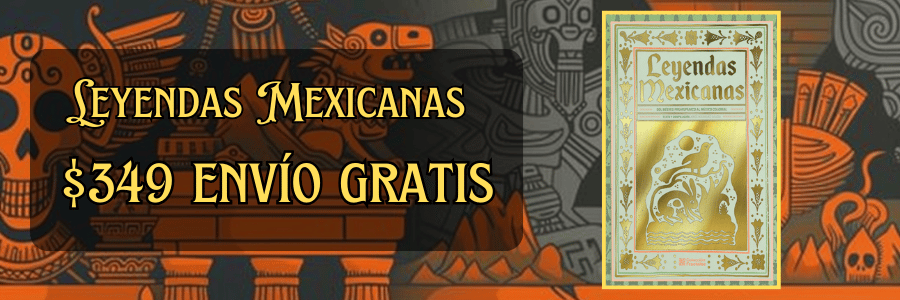Exploring Mexico’s Rich Tradition of Handcrafted Ceramics
Exploring Mexico’s Rich Tradition of Handcrafted Ceramics
The art of ceramics in Mexico is a vibrant expression of culture, history, and creativity woven into the very fabric of the nation. For centuries, pottery has been a significant part of Mexican life, encompassing diverse traditions, techniques, and styles that reflect the indigenous communities' profound connection to the land. As one of the oldest crafts in human history, ceramics symbolize a fusion of functionality and artistry, allowing people to transform simple earth into objects of beauty. The legacy of Mexican ceramics continues to prosper as it resonates with contemporary ideals while preserving its historical roots.
Archaeological evidence suggests that the origins of pottery in Mexico date back to approximately 2500 BCE. The initial forms of pottery were utilitarian vessels created for storage, cooking, and serving. The earliest civilizations, such as the Olmecs, developed distinct pottery styles characterized by intricate designs and elaborate forms. These early artisans would shape clay by hand and combine it with natural pigments from minerals and plants to create captivating patterns. As centuries passed, techniques evolved, leading to the emergence of rich ceramic traditions among various pre-Hispanic cultures.
The Zapotecs and Mixtecs, for instance, used clay to create intricate decorative wares, often featuring detailed motifs that depicted daily life, mythology, and nature. These pieces served practical purposes but also held symbolic significance, revealing insights into the spiritual beliefs of their creators. The famed "Tlayacapan" style originated from the Morelos region, known for its distinctive textured surfaces and vibrant colors. Pottery from this area has endured through generations, achieving recognition as a treasured craft that honors ancient methodologies.
With the arrival of Spanish colonizers in the 16th century, Mexican ceramics experienced significant transformation. The introduction of new materials, techniques, and cultural influences reshaped pottery production, giving rise to hybrid styles that combined indigenous traditions with European aesthetics. This period saw the emergence of Talavera pottery, characterized by its bright glazes and intricate patterns. Originating from the city of Puebla, Talavera became emblematic of high-quality ceramics and continues to be celebrated as a reflection of Mexico's cultural heritage.
Despite these colonial changes, indigenous communities retained their unique pottery practices. Regions such as Oaxaca and Jalisco are known for their distinct ceramic styles. In Oaxaca, artisans produce black clay pottery, known as "barro negro," which has become one of the most recognized forms of Mexican pottery. The process involves a labor-intensive technique of burnishing the clay, resulting in a deep, lustrous finish. Artisans often incorporate symbols from nature into their creations, indicating respect for the environment and ancestral heritage.
Another prominent region is the state of Jalisco, home to the traditional pottery style known as "Talavera de la Luz." Unlike its namesake from Puebla, this style features luminous glazes and intricate designs that often depict local flora and fauna. The skillful craftsmanship of artisans in Jalisco exemplifies the region's commitment to preserving traditional methods while adapting contemporary elements into their work. The artistic expression found in Jalisco pottery showcases an extraordinary mastery of form and function, embodying both beauty and usability.
In the heart of Michoacán, a unique ceramic tradition thrives among the Purepecha community. "Cucharas de Tzintzuntzan" are intricately crafted wooden spoons adorned with colorful ceramic details. These pieces serve as functional utensils while doubling as artistic heirlooms passed down through generations. The designs often reflect traditional motifs and local stories, merging functionality with cultural significance. The Purepecha have maintained their ancestral techniques, embodying a steadfast commitment to their heritage.
The emphasis on communal values is evident in the work of artisans from around Michoacán. Traditional workshops often involve entire families collaborating in the production process. Knowledge is shared and cultivated through generations, with elders teaching the youth the importance of craftsmanship and cultural identity. Such apprenticeship practices not only ensure the survival of the craft but also reinforce a sense of belonging within the community.
Contemporary Mexican ceramics continue to captivate audiences both locally and internationally. As globalization reshapes artistic expression and market demands, many artisans have found innovative ways to blend traditional techniques with modern design sensibilities. The creation of contemporary ceramic art has given rise to a new generation of artists who seek to push boundaries while remaining mindful of their cultural roots. This modern approach often embraces abstract forms and innovative glazes, appealing to broader audiences while retaining the authenticity of Mexican craftsmanship.
Ceramics also play an integral role in Mexican celebrations and traditions. Vessels for serving food are often hand-crafted to enhance the communal dining experience, embodying a deep-rooted belief in hospitality and togetherness. During festivities such as Day of the Dead, artisans create intricate offerings, or "ofrendas," adorned with vibrantly painted ceramics. These memorials honor ancestors and celebrate the cycle of life, showcasing the rich symbolism embedded in every piece.
The connection between ceramics and identity is further emphasized by artisanal partnerships and cooperatives that engage local artisans to promote their work sustainably. Many of these cooperatives work toward preserving traditional crafting techniques while fostering economic development in rural communities. By connecting artisans to global markets through fair trade practices, they help elevate the socio-economic status of craftspeople while sustaining cultural heritage.
The intricate world of Mexican ceramics is also deeply intertwined with the environment. The sourcing of clay and natural pigments from the land reflects a holistic relationship between artisans and nature. Many artisans are committed to sustainable practices, using local materials and minimizing their ecological footprint. This reverence for nature is echoed in the designs carved into ceramics, many of which celebrate the flora and fauna of the region.
Despite challenges faced by the industry, including competition from mass-produced ceramics, the intrinsic value of handcrafted items retains its allure. Consumers are increasingly drawn to the authenticity and artistry of traditional ceramics, seeing them as unique pieces that tell a story. The popularity of handmade goods fosters an appreciation for quality over quantity, leading to a resurgence in the demand for artisanal products rooted in rich cultural narratives.
As the world becomes more interconnected, the recognition of Mexican ceramics as essential cultural expressions continues to grow. Art fairs, exhibitions, and cultural festivals dedicated to showcasing the craftsmanship of local artisans have emerged as significant avenues to celebrate pottery's rich history and ongoing evolution. These events provide opportunities to engage audiences with the stories behind the creations, further bridging the gap between traditional practices and contemporary artistry.
In conclusion, the tradition of handcrafted ceramics in Mexico is a profound testament to the resilience of cultural heritage and the unwavering spirit of artisanal craftsmanship. Through centuries of evolution, pottery has seamlessly woven itself into the lives of people across the nation while showcasing the beauty of diversity and identity. The dedication of Mexican potters to preserving their ancient knowledge while exploring new horizons ensures that this revered art form will endure for generations to come. As the world celebrates creativity and culture, the hand of the Mexican artisan remains a symbol of passion, heritage, and the beauty found in every lovingly crafted piece.
Explore More:
| Colonial Mexican Artisans: Crafting Silver, Pottery, and Textiles |
| The Aftermath of the French Occupation: Rebuilding a Nation |
| The Assassination of Emiliano Zapata: The End of a Revolutionary Icon |
| Chichimeca Technology: Tools and Weapons for Survival |
| The Impact of the Porfiriato on Mexico’s Social Classes |
| Colonial Trade in Mexico: Silver, Gold, and Global Commerce |
| The Role of Oil in Shaping the Future of Smart Cities |
| The Role of Iturbide’s Army of the Three Guarantees in the Victory |
| How France’s Ambitions in Mexico Led to the Collapse of the Second Empire |
| The Challenges of Oil Exploration in the Middle East |



